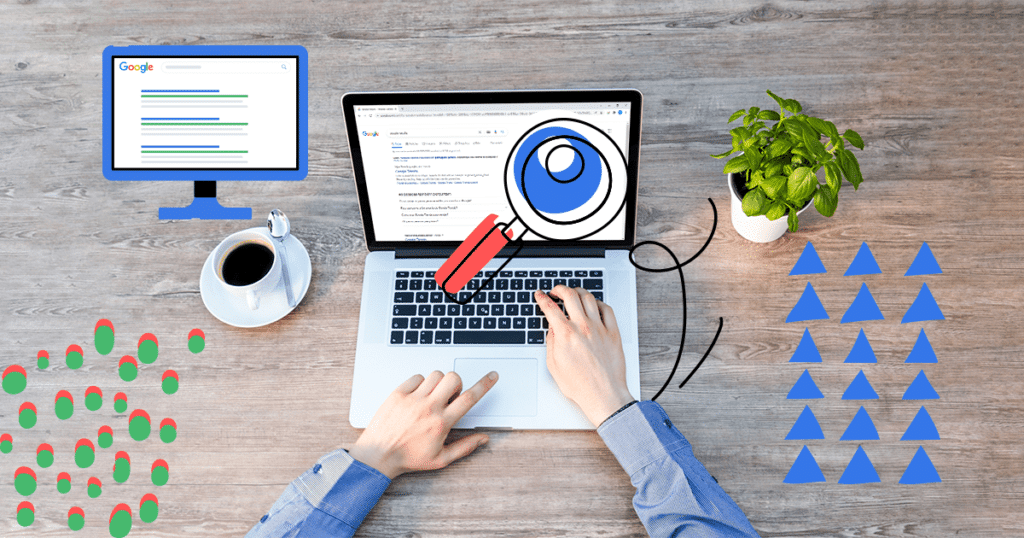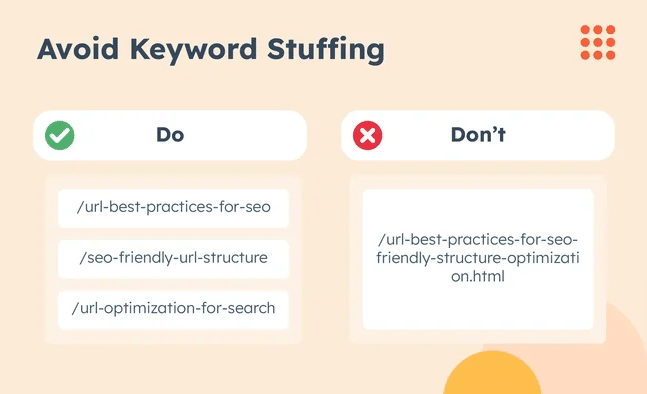Search Engine Optimization is the key for your company to increase its reach on the internet.
SEO refers to a set of techniques, prevalent in Content Marketing strategies, which aim to increase the ranking of your brand channels in search engine results pages.
Therefore, it’s an organic alternative to digital ad campaigns, although you can use both approaches in a complementary way. After all, the struggle for space on the internet is increasingly competitive, requiring complete and diversified strategies.
This also applies to the SEO concept itself, which is divided into on and off-page practices. We’ve created this article to explain on-page SEO. Here, you’ll see:
- What Is Off-Page SEO?
- On-Page SEO Checklist
- Factors That Influence On-Page SEO
- How Off-Page SEO Works
- The Most Important Type of SEO
- Update URLs, Title Tags, and Meta Descriptions
On-page SEO is a self-explanatory term. It refers to the set of SEO practices applied directly to your pages’ structure, making them more suitable for the algorithm’s ranking criteria.
To understand this, you need to know how the most popular search engines, such as Google, work.
These platforms have their own algorithms, focusing on analyzing each web page, and providing users with relevant results.
Imagine you want to know what the main types of interactive content are, in order to optimize your digital strategy.
To do this, you google and perform the search “What are the main types of interactive content?”. As soon as you click “search”, the algorithm starts working.
Based on predetermined criteria, such as the relevance of keywords and the domain’s authority, the search engine will present the results that have the highest chance of satisfying your demand.
Notice that we mentioned keywords, which are on-page elements, and the authority, which is an off-page factor.
This way, it’s easy to realize that, to achieve real organic reach, your brand needs to embrace the totality of an SEO strategy.
What Is Off-Page SEO?
An integral part of your website’s SEO strategy, off-page SEO (or off-site SEO) refers to the techniques used outside of your website to gain traction within the SERPs.
With off-page SEO, the focus is on the relevance, authority, trustworthiness, and popularity of your website as seen by web users.
Backlinks, which are when another person, website, or page links to or promotes your website and vouches for you, are one of the more popular tactics used in off-page SEO.
Of course, there are other forms of off-site SEO activities, including guest blogging, social media marketing, and influencer marketing.
While on-page and off-page SEO are both different, the two work together to help your site rank in search engines.
In fact, off-page SEO still plays a critical role in your website’s ability to rank thanks to the trustworthiness, relevance, and authority that quality off-page SEO actions offer.
Studies have shown that off-page SEO can account for 50% or more of the SERP ranking weight. Top Google results tend to have an average of almost 4 more backlinks than the rest of the top 10 results.
On-Page SEO Checklist
On-page SEO focuses on actions you can take on your website to improve its ability to rank in search engines. To make things easier, we have compiled an on-page SEO checklist of tasks that will help you grow your website by optimizing page content. Check it out!

Always remember that SEO is not a one-and-done thing. You must continue to invest in SEO tactics to ensure your website ranks high in the SERPs.
Factors That Influence On-Page SEO
If you pay attention, you will notice that all criteria used by Google to rank pages are based on user satisfaction.
Since the algorithm indicates articles that contain relevant keywords and belong to respected domains, it favors the consumer experience.
So, more than knowing technically and theoretically, the ranking criteria, your brand needs to focus on promoting quality experiences.
With a well-developed strategy in this sense, success in SEO is a consequence.
Even so, knowing the technical criteria is fundamental. The following is a list of some on-page elements that are taken into account in the algorithm analysis:
- title tag;
- heading tags;
- keywords;
- readability;
- page responsivity;
- meta description;
- URLs;
- internal links.
As you can see, on-page SEO is critical to improving your position on Google ranking. But what is the real importance of all this?
We need to look at the big picture, which includes the reputation, reach, and credibility of your brand on the internet.
To begin with, some of the on-page SEO concepts we mentioned earlier are directly linked to the brand’s ability to engage the consumer.
When we talk about readability, for example, we go beyond the mere intention to please the algorithm.
In the posts of our blog, you can notice some patterns of organization.
Content aligned to the left, short paragraphs, use of images along the content, headings, and passages in bold are some examples. But after all, what is the intention of this?
Based on studies on internet user experience, these practices aim to make it easier for the visitor to read and understand the content.
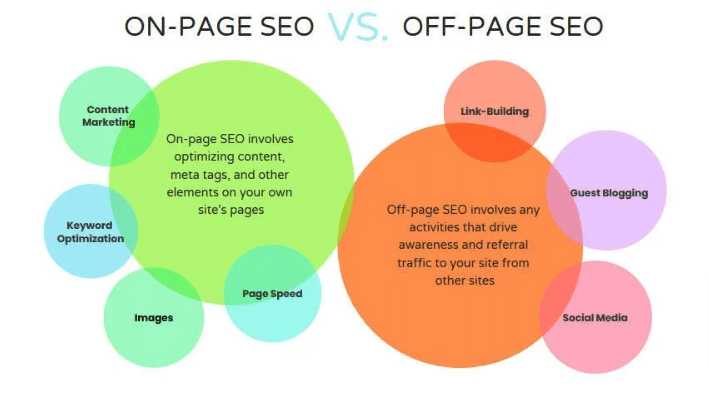
This motivates them to explore more posts and enables them to learn about various subjects, which leads to their spontaneous return in the future.
That’s exactly what on-page SEO is all about. By using it, you guarantee that the user will have the necessary conditions to consume the content and even visit other pages on your website.
Thus, adopting on-page SEO techniques is nothing more than improving your customers’ experience, with all the benefits you can bring to your brand.
This way, the consumers themselves will share your content, boosting its organic reach and, at the same time, increasing your ranking position.
Before we go deeper into how you can optimize your on-page elements, let’s further understand the difference between the two areas of SEO.
In the first topic, we mentioned some factors that affect SEO on-page. They all have one thing in common: you can optimize them by making changes in your page’s settings and content.
On the other hand, off-page SEO refers to SEO optimizations that you can apply with partnerships, campaigns, and social media marketing.
How Off-Page SEO Works
Let’s say your Content Marketing strategy includes creating posts for your company’s Instagram.
In this channel, you access a segmented audience and get the opportunity to nurture it with educational materials, gently directing it to your blog.
Besides improving your brand image, this practice can generate significant traffic to your website, increasing your authority.
Another widespread off-page SEO practice is link building. The idea is to create partnerships with other domains so that they insert in their posts links directing to your blog.
It’s also possible to gain these links organically, through the production of extremely relevant and engaging materials. That’s why more and more companies are investing in interactive content, which reaches higher levels of engagement.
The Most Important Type of SEO
Off-page and on-page SEO are equally important. Remember that the focus of the whole strategy should be the user experience.
Therefore, there is no point in generating traffic to your website if your content is not attractive and engaging.
Moreover, you won’t find partnerships to establish link building if your on-page elements are not optimized.
After all, nobody wants to recommend a page that takes too long to load, for example, as this would cause a poor experience for users.
Therefore, it’s essential to see on-page and off-page SEO as complementary, interdependent practices.
But how to optimize these efforts?
Now that you understand the importance of on-page SEO and how to differentiate it from off-page elements, we can go deeper into the best practices and techniques for the optimization process.
So keep on reading!

Update URLs, Title Tags, and Meta Descriptions
The first step to optimize your SEO on-page is to update these three elements, which are directly related to your Google ranking position.
URL
For example, the URL indicates to the algorithm and the readers what the content of the page is about.
Thus, a confusing and extensive URL could hinder your positioning in the SERPs and drive users away. That is why it’s essential to update page URLs instead of using the automatically generated format.
Title tag
Title tag have a similar function. They are not necessarily the article or page’s title, but the title shown by search engines.
It should be short (below 70 characters) and bring relevant information about the content.
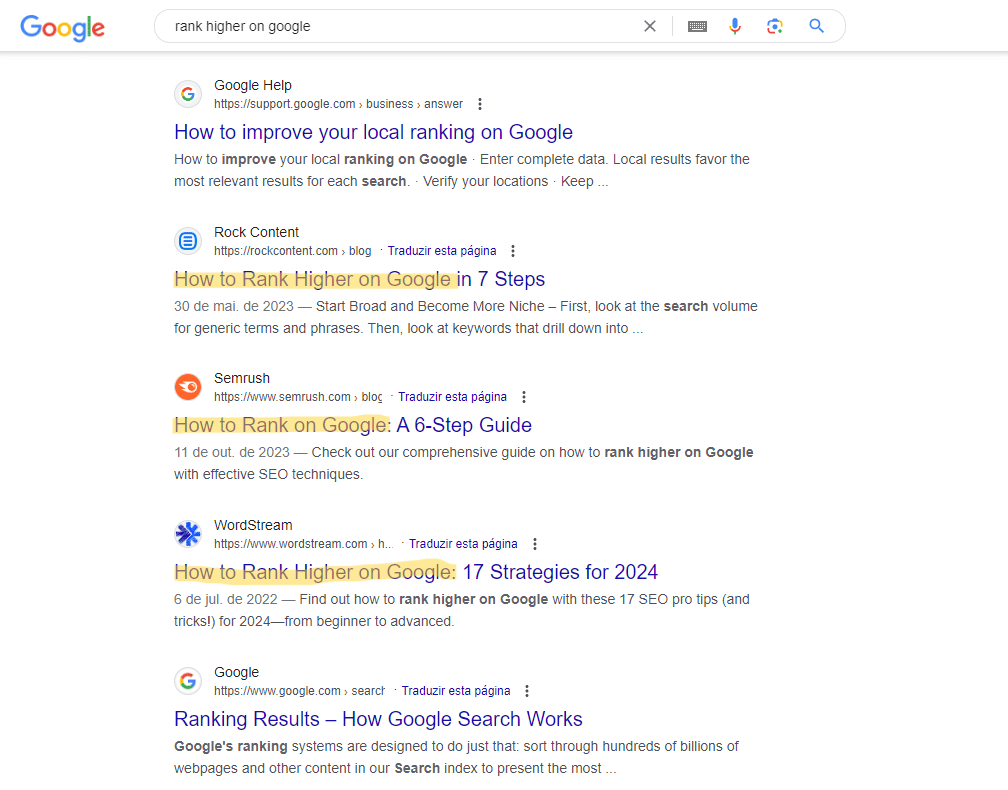
Meta description
Finally, it’s necessary to optimize the meta description, which is the small descriptive text that appears in search engines, just below the title tag.
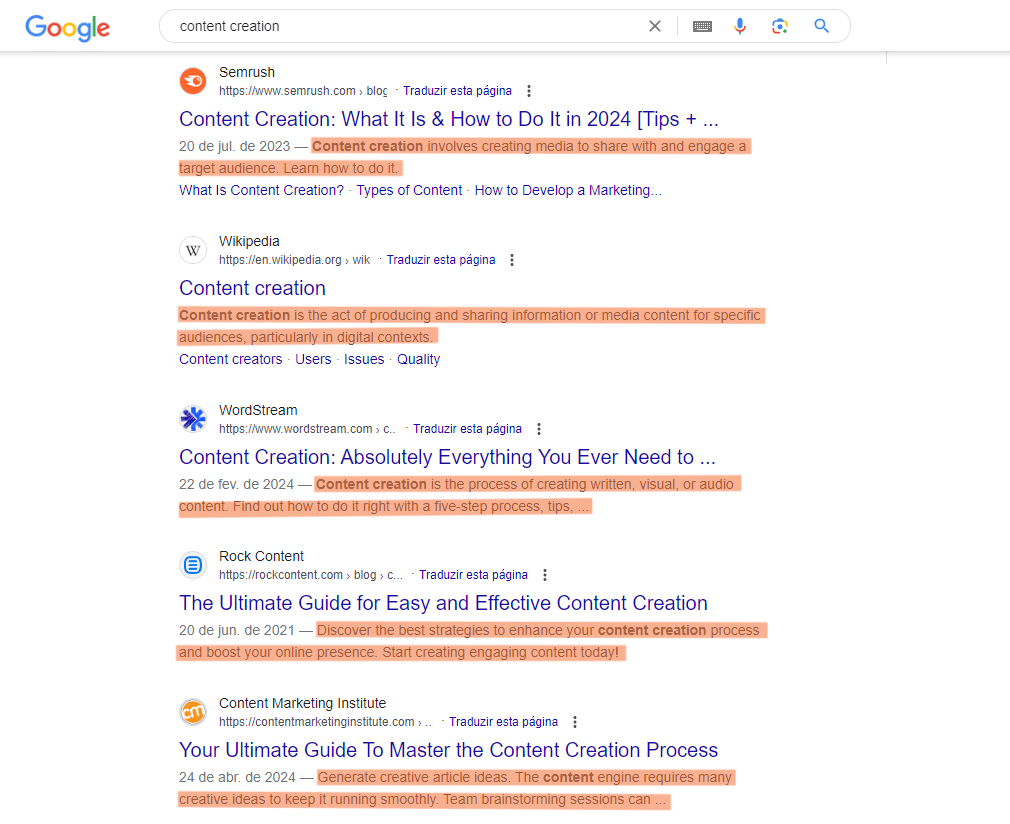
It’s essential to include the keyword in all these elements.
Define your buyer persona
You already know that buyer persona is a fundamental tool for any digital strategy.
But is it relevant to on-page SEO too? Absolutely.
Although most SEO optimizations are designed to suit an algorithm, it’s essential to keep the focus on your customers’ experience. You are not dealing with machines, but with humans.
So, more than any technical specification, the quality of the content is critical. There is no point in following all the algorithm’s demands if, when arriving at your page, the reader faces a poor, irrelevant, outdated material.
Therefore, defining your persona’s characteristics is the best way to keep your content focused on the customer.
By concentrating on your ideal client, you will find ways to produce content that is really appealing to the audience.
Focus on relevant keywords
Keywords are decisive in the success of your digital strategy. Choosing relevant terms can maximize your organic reach and bring even more visitors to your blog. To do this, you need to apply some techniques.
As we have already mentioned, you should include your keywords in meta descriptions, title tags, and URLs. More than that, they should be present in your texts, preferably near the left margin of the page.
However, it’s not enough to choose terms you think are relevant and spread them in the content.
You should conduct keyword researches, considering your buyer persona, your goals, and your competitors.
This way, you will identify which words are most relevant to the audience, as well as the hardest to compete for. An excellent SEO tool, such as SEMrush, makes this process simple and efficient.
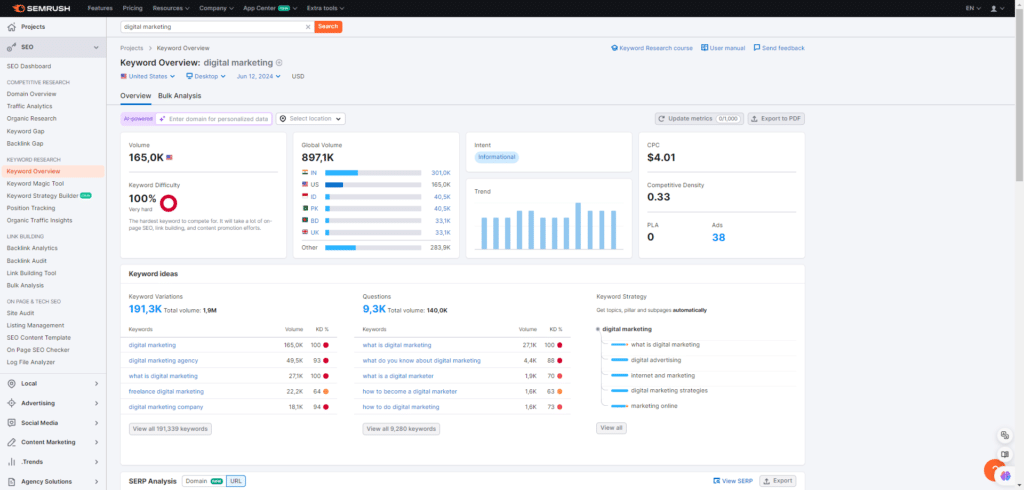
Use visual content
Visual content, such as informative video or infographic, is excellent for enriching your posts and conveying important information.
Also, they serve as alternatives for people who are not willing to read the full article.
When we talk about on-page SEO, it’s vital to consider the setup of images, which may be displayed in Google’s visual searches.
The first thing you should pay attention to is the name of the file uploaded to the page, which must contain the keyword.
When uploading, you should define the alt text, which is the alternative text to display in case the image doesn’t open.
It tells Google what the image is about and helps to index it in Google Images, as well as promoting a much more accessible experience for the visually impaired.

It’s also important to prioritize images that are light and fit the page. This way, you avoid that the page takes too long to load, which would harm the user experience.
Add internal links
Internal links are essential to increase the time users spend on your website. After all, they serve as a starting point for your readers to access more pieces of content. This certainly favors their relationship with the brand.
So, if in a blog post, you mention a subject that is already the focus of another article, insert a link to that content.
This way, users interested in knowing more can open the material in another tab and keep enjoying the experience.
Be mobile-friendly
Most internet users use mobile devices for various activities. They not only read blog posts but also shop with just a few clicks on the screen. So, if your content is not suitable for tablets and smartphones, you are missing opportunities.
Google has long noticed the importance of mobile users. That’s why, since 2015, its algorithm analyzes the performance of pages not only on desktops but on all types of screens.
If you don’t know if your website is mobile-friendly, you can check out a very simple tool provided by Google.
Now that you know what on-page SEO is, you can optimize your content and improve your ranking in SERPs. Using appropriate keywords and structuring your pages are, besides the content’s quality, key elements in this process.
Want to improve your SEO strategy? Download now our complete guide to achieve the first result on Google pages!
